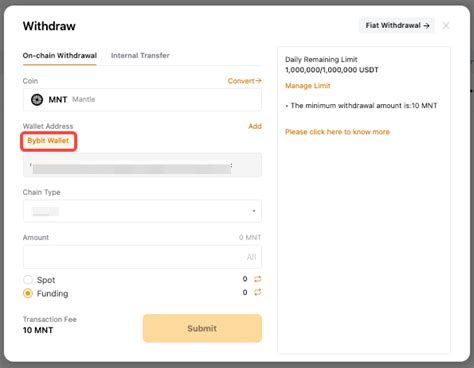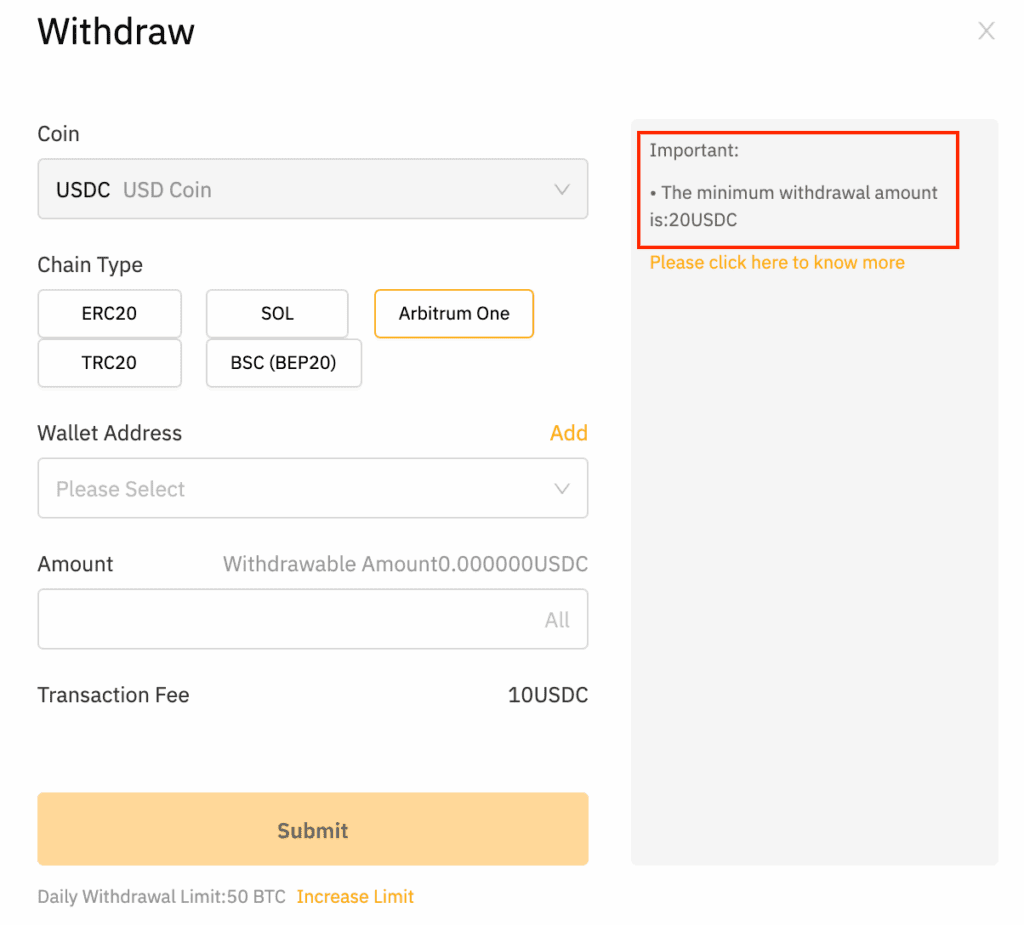 Withdrawing funds from an exchange is a critical skill for every trader. Experts at Trading Academy emphasize the importance of understanding all stages of the process to avoid losing funds due to address errors or choosing the wrong network. In this article, we’ll cover all the withdrawal methods from Bybit, including step-by-step instructions and important nuances.
Withdrawing funds from an exchange is a critical skill for every trader. Experts at Trading Academy emphasize the importance of understanding all stages of the process to avoid losing funds due to address errors or choosing the wrong network. In this article, we’ll cover all the withdrawal methods from Bybit, including step-by-step instructions and important nuances.
Output Methods
Bybit offers several withdrawal methods depending on your needs and availability in your country.
Withdrawing cryptocurrency to an external wallet is the most common method. You send USDT, BTC, ETH, or other cryptocurrencies to your personal wallet (cold or hot) or to another exchange. This method works in all countries and gives you full control over your funds after withdrawal. Fees depend on the chosen blockchain network.
P2P (peer-to-peer) trading is the purchase or sale of cryptocurrency directly to other users. Bybit P2P supports bank transfers, e-wallets, and cash in some regions. This method allows you to withdraw funds in fiat (rubles, dollars, euros) without direct interaction with banks on the exchange’s part. Availability of methods varies by country.
Bank card and partner services — direct withdrawal to a Visa or Mastercard card, or through integrated payment providers. This feature is not available in all regions, may require additional verification, and may incur additional fees. The process is faster for those who want to receive fiat directly.
The method you choose depends on your purpose: if you plan to store your cryptocurrency long-term, withdraw to a cold wallet; if you need fiat money, use P2P or a card; if you’re transferring to another exchange, choose direct cryptocurrency withdrawal.
Step-by-step instructions: PC and mobile app
General algorithm (relevant for both versions)
Step 1: Moving to the conclusionOn PC: Log in to your account, find the “Assets” section in the upper right corner and select “Withdraw”.
In the mobile app: Go to the “Assets” tab at the bottom of the screen, then tap the “Withdraw” button at the top.

Withdraw: Choosing a Network and Coin
Step 2: Selecting a Cryptocurrency and NetworkSelect the cryptocurrency for withdrawal—USDT, BTC, ETH, etc. Choosing the right blockchain network is critical. Several networks are available for USDT:
- TRC-20 (Tron) — lowest fees, fast confirmation
- ERC-20 (Ethereum) – high fees, slower when the network is loaded
- BSC, Polygon, Arbitrum — low fees, good speed
Important: The address and network must match, otherwise the funds will be lost forever.

Network selection: ERC20/TRC20/BSC (Bybit)
Step 3: Enter the recipient’s addressCopy the address of your wallet or another exchange. Paste it into the “Address” field. Check the first and last characters of the address. In the mobile app, you can scan the wallet’s QR code—this is safer than entering it manually.
Some cryptocurrencies (XRP, XLM, and others) require an additional Memo/Tag. This is a required field, without which funds will not be credited to your account.
Step 4: Enter the amount and confirmEnter the withdrawal amount. Bybit will display the network fee and the amount the recipient will receive. Click “Withdraw” and confirm using codes from email, SMS, and Google Authenticator (if configured). Biometrics may be required in the mobile app.
Step 5: Tracking StatusTrack the status in the “Transaction History” section. Withdrawals are typically processed within 15-60 minutes.
Statuses: Processing → Blockchain Processing → Success (completed).
Bybit provides a Transaction ID (TxID) that can be checked in a blockchain explorer (e.g., Tronscan for TRC-20) for real-time tracking.
Commissions
Withdrawal fees on Bybit are based on the blockchain network fee. Bybit typically doesn’t add a significant markup, but fees are dynamic and depend on network load.Key principles:
- TRC-20 (USDT) – typically around 1 USDT, the most economical option for stablecoins
- ERC-20 (USDT) — more expensive under high load on the Ethereum network, can reach $10-30
- BSC, Polygon, Layer 2 — low fees, good speed/price ratio
- Fees vary depending on blockchain activity—Bybit displays the current figure before confirmation.
Minimum withdrawal amounts vary depending on the cryptocurrency, but are typically equivalent to $10-20. Exact amounts are displayed in the withdrawal form.
P2P fees: Bybit generally does not charge a commission on P2P transactions, but the exchange rate with counterparties includes a spread of 1-3%. Compare offers from different sellers. Critical: Only make payments in the Bybit escrow chat; do not transfer funds outside the platform or communicate with the counterparty in messengers.
Withdrawals to a card typically include a 2-5% commission plus a fixed fee. Exact terms vary by payment provider and region.
Important nuances and common mistakes
Account verification (KYC) is usually required for withdrawals. Without verification, limits are significantly reduced or withdrawals are unavailable. Basic verification typically takes 10-30 minutes, but can take up to several days. Complete verification in advance.
Whitelisting is a security feature that allows withdrawals only to pre-saved addresses. Once Whitelisting is enabled, there is a security delay before withdrawals to new addresses. This protects against account hacking, but requires planning.
Processing time: On average, withdrawals take 15-60 minutes, but allow up to several hours during peak network loads or additional exchange checks.
Common mistakes:
- Incorrect network – sending USDT ERC-20 to an address that only supports TRC-20
- Forgotten Memo/Tag for XRP, XLM, and other coins
- Typo in the address – one incorrect character leads to loss of funds Withdrawal to a smart contract address instead of a regular wallet
- Attempting to withdraw funds from a futures wallet – first transfer to a spot wallet within the exchange
Output Security
Two-factor authentication (2FA) is required. Use Google Authenticator or Authy instead of SMS. Keep your 2FA backup codes safe.
Anti-phishing code is a unique code in the exchange’s email. Configure it in your security settings. Emails without your code are fraudulent.
Verification via a small transaction – first send a minimum amount (10-20 USDT) and verify that the funds have arrived. After confirmation, withdraw the main amount.
Don’t keep all your funds on the exchange—withdraw most of them to your personal wallet after trading. Exchanges are subject to hacker attacks, and funds on a centralized platform are not under your complete control.
Critical Risk Alerts
Withdrawing cryptocurrency is an irreversible operation. Entering an incorrect address or selecting the wrong network will result in a permanent loss of funds. Neither Bybit nor the receiving party will be able to recover cryptocurrency sent to an incorrect address or network. Always verify the address and use test transactions for new recipients.
Security risks include phishing attacks, fake Bybit websites, and malware that spoofs the address in your clipboard. Always verify the website URL (should be https://www.bybit.com), do not click links in emails, and use the official app from the App Store or Google Play.
Regulatory risks are associated with restrictions on cryptocurrencies in some countries. Withdrawals may be blocked or restricted depending on the jurisdiction. Banks may block transfers related to cryptocurrency transactions, especially P2P payments. Keep proof of the legitimacy of transactions.
Never share your private keys, seed phrases, or 2FA codes with third parties. Bybit employees will never ask for this information. Any request for private data is a sign of fraud.
Technical risks include smart contract errors (when withdrawing to DeFi protocols), blockchain load (confirmation delays), and network forks (temporary unavailability). During periods of extreme volatility, exchanges may temporarily suspend withdrawals to stabilize liquidity.
Invest and withdraw only those funds that you are comfortable controlling. Transitioning to self-custody of cryptocurrency requires responsibility for the security of your private keys. Losing access to your personal wallet means the irrevocable loss of all funds, with no possibility of recovery.
Conclusion
Withdrawing funds from Bybit is a simple process, provided you follow all security rules and carefully verify your details. Key points: choosing the right blockchain network, carefully verifying the recipient address, using test transactions for new addresses, and setting up all account security features.
To gain in-depth knowledge of cryptocurrency security, risk management, and capital protection, we recommend training at the Trading Academy, which offers up-to-date methods for working with digital assets and comprehensive cybersecurity programs.


